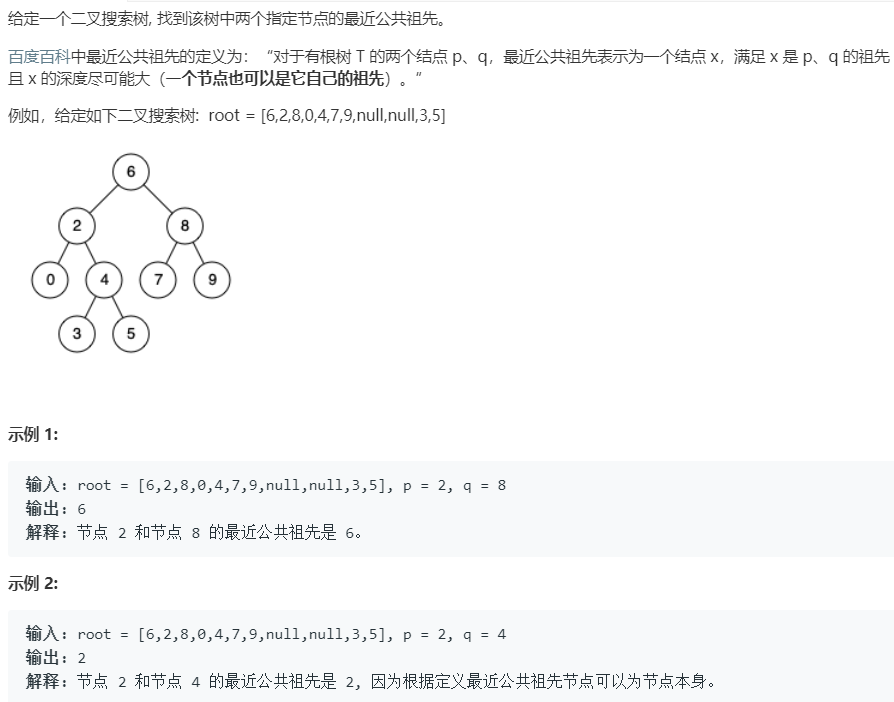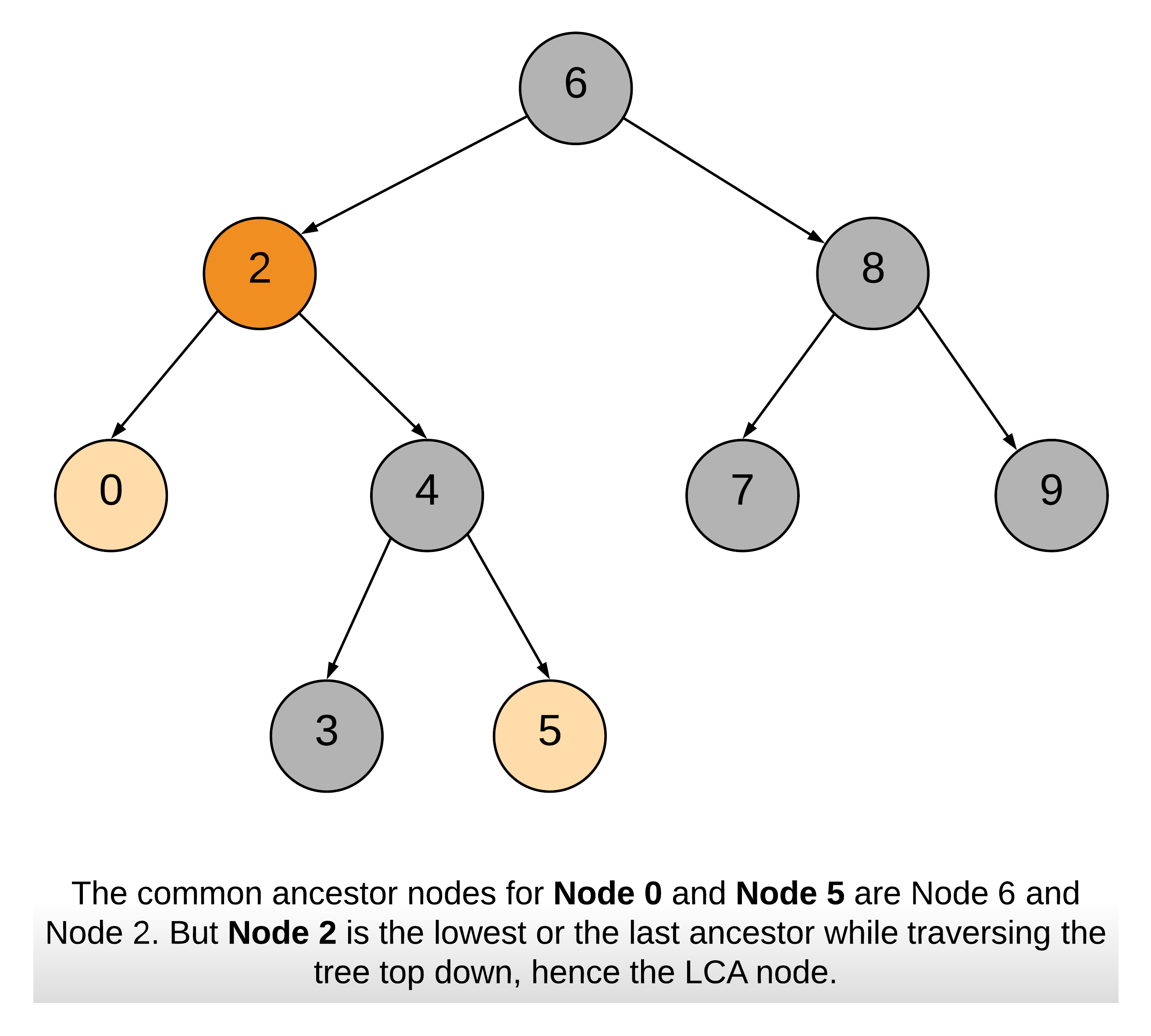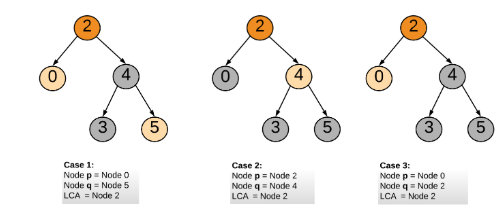题目:

解决:
方法一:递归
思路:
节点 p,q 的最近公共祖先(LCA)是距离这两个节点最近的公共祖先节点。在这里 最近 考虑的是节点的深度。下面这张图能帮助你更好的理解 最近 这个词的含义。

笔记:p 和 q其中的一个在 LCA 节点的左子树上,另一个在 LCA 节点的右子树上。
也有可能是下面这种情况:

算法:
1)从根节点开始遍历树;
2)如果节点p和节点q都在右子树上,那么以右孩子为根节点继续1的操作;
3)如果节点p和节点q都在左子树上,那么以左孩子为根节点继续1的操作;
4)如果条件2和条件3都不成立,这就意味着我们已经找到了节点p和节点q的LCA了;
1 /** 2 * Definition for a binary tree node. 3 * struct TreeNode { 4 * int val; 5 * TreeNode *left; 6 * TreeNode *right; 7 * TreeNode(int x) : val(x), left(NULL), right(NULL) {} 8 * }; 9 */ 10 class Solution { 11 public: 12 TreeNode* lowestCommonAncestor(TreeNode* root, TreeNode* p, TreeNode* q) 13 { 14 // value of current node or parent node. 15 int parentVal = root->val; 16 17 // value of p 18 int pval = p->val; 19 // value of q 20 int qval = q->val; 21 22 if (pval > parentVal && qval > parentVal) 23 { 24 // If both p and q are greater than parent 25 return lowestCommonAncestor(root->right, p, q); 26 } 27 else if (pval < parentVal && qval < parentVal) 28 { 29 // If both p and q are lesser than parent 30 return lowestCommonAncestor(root->left, p ,q); 31 } 32 else 33 { 34 // We have found the split point, i.e. the LCA node. 35 return root; 36 } 37 } 38 };